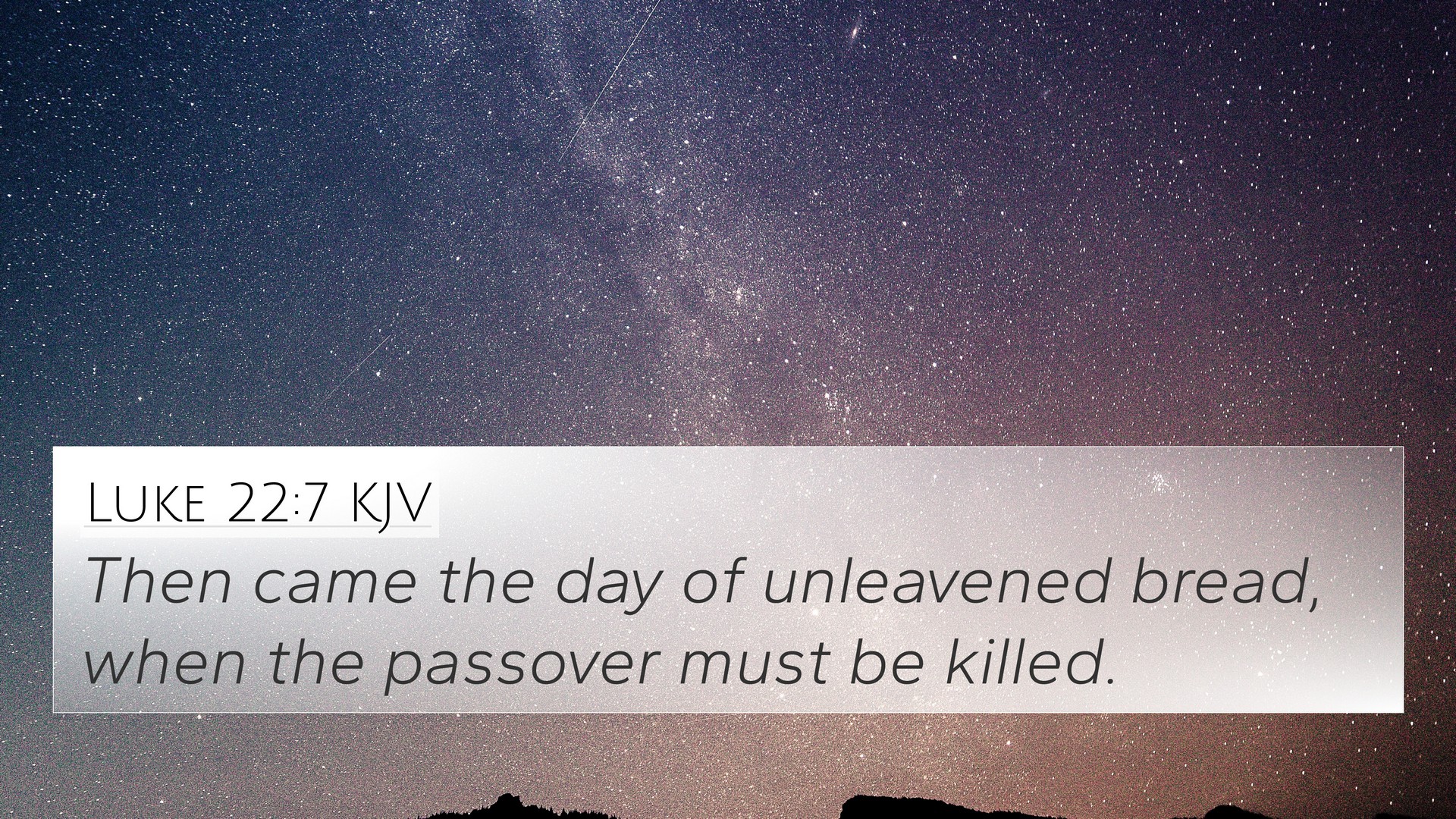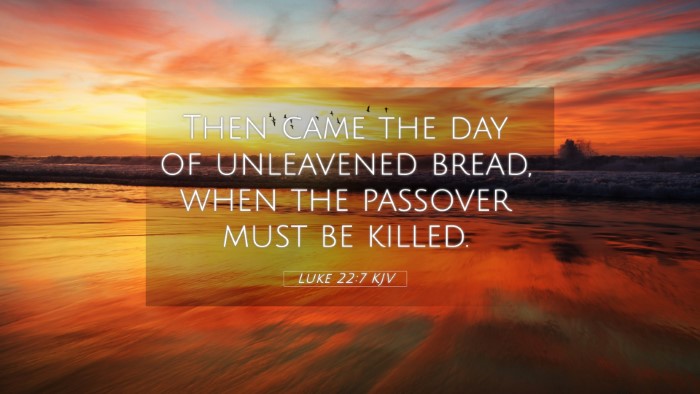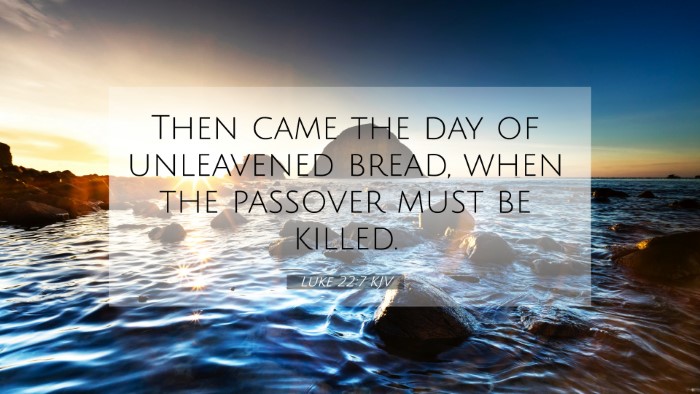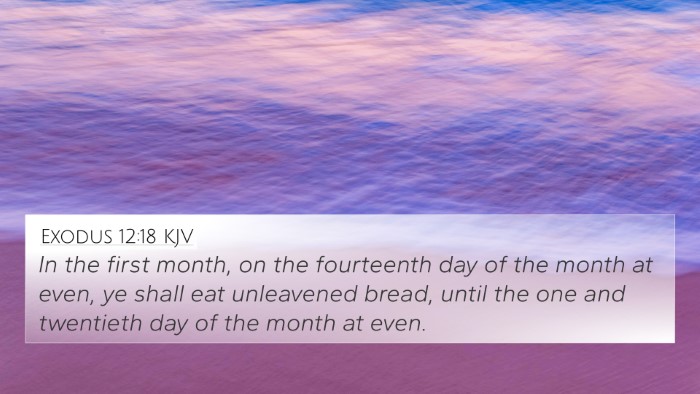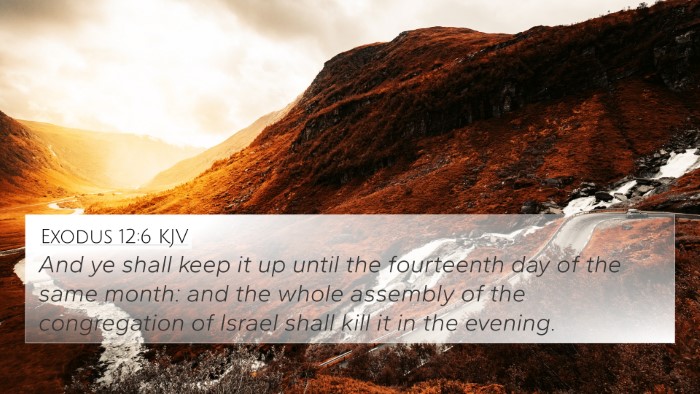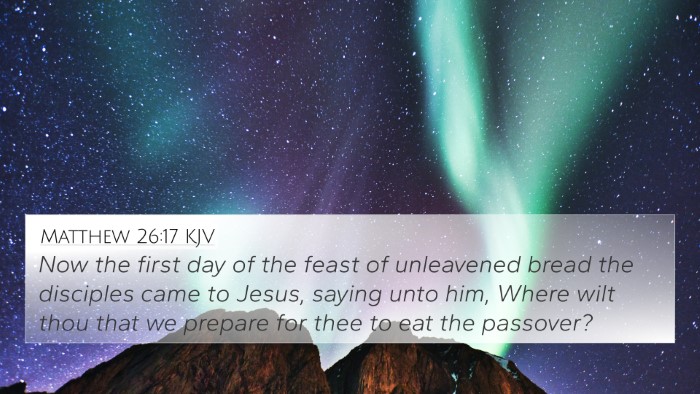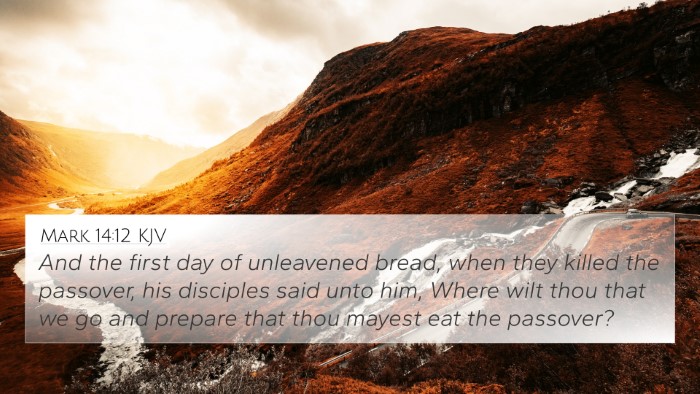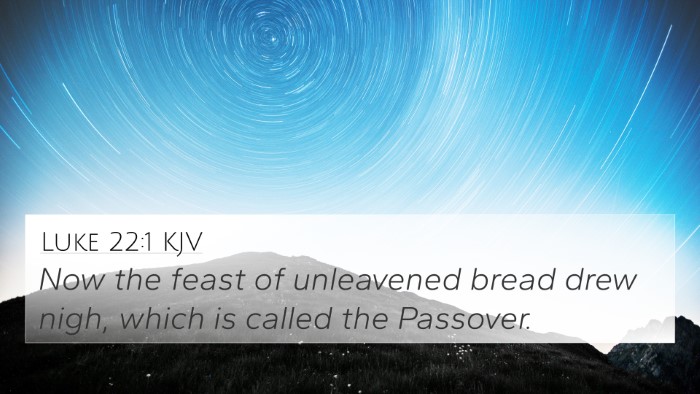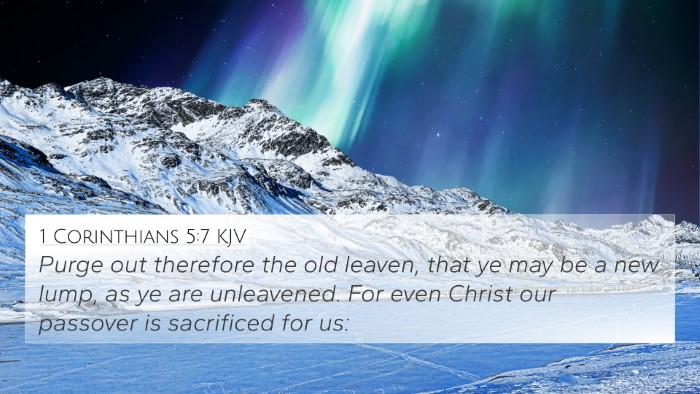Understanding Luke 22:7
In the Gospel of Luke, chapter 22, verse 7 states:
"Then came the day of unleavened bread, when the Passover must be killed."
This verse marks the beginning of the Passion narrative, emphasizing the significance of the Passover in Jesus' final days before crucifixion. This verse draws connections to several important themes within Scripture, including sacrifice, redemption, and fulfillment of prophecy.
Summary of Meaning
According to public domain commentaries, the verse encapsulates the following key points:
- Passover Significance: The Passover feast is rooted in the Exodus story (Exodus 12), where God's judgment passed over Israel while striking down the Egyptians. This foreshadows Jesus as the ultimate Passover Lamb, whose sacrifice brings redemption.
- Unleavened Bread: The mention of unleavened bread highlights the theme of purity, paralleling how Jesus, without sin, is the perfect sacrifice. This ties to Paul's remarks in 1 Corinthians 5:7, where he refers to Christ as our Passover Lamb.
- Divine Timing: The phrase "the day of unleavened bread" signifies God's predetermined plan for Jesus' sacrificial death, aligning with the theme of divine providence seen throughout the Scriptures (Acts 2:23).
- Fulfillment of Prophecy: This event fulfills the prophecies about the Messiah, underlining Jesus' role as the awaited Savior who would bear the sins of many (Isaiah 53:5).
Bible Cross References
This verse has numerous connections to other scriptures that enhance its meaning:
- Exodus 12:1-14: Details the original Passover instructions and the significance of the blood on the doorposts as a protection against judgment.
- 1 Corinthians 5:7: Paul identifies Christ as our Passover, emphasizing the theological transition from the Old Testament ceremony to its fulfillment in Christ.
- John 1:29: John the Baptist refers to Jesus as the "Lamb of God," confirming his role as the sacrificial lamb foreshadowed in the Passover.
- Matthew 26:17-19: Synoptic link emphasizing the preparations made for the Passover meal, illustrating the importance of this festival in the ministry of Jesus.
- Luke 22:15: Jesus expresses anticipation for the Passover meal, indicating its heightened significance during this final meal with his disciples.
- Hebrews 9:22: Highlights the necessity of blood for the forgiveness of sins, linking to the essential elements of the Passover narrative.
- Isaiah 53:7: Describes the suffering servant, paralleling Jesus' role in bearing the sins of many, making a profound connection to the sacrificial system of the Old Testament.
Thematic Connections
The themes arising from Luke 22:7 go beyond just the immediate context to broader Biblical narratives. These themes are connected through:
- Redemption: The overarching theme of redemption permeates the Bible, starting with the Exodus and culminating in Jesus' death and resurrection.
- Covenant: This passage underscores the continuity between the Old Covenant associated with the Passover and the New Covenant inaugurated by Christ’s blood.
- Sacrifice: The sacrificial motif is repeated throughout both Testaments, revealing God’s plan for atonement through Jesus’ ultimate sacrifice.
- Faithfulness of God: The phrase reflects God’s commitment to His promises, linking divine faithfulness across generations and covenant relationships.
Commentary Insights
Commentators such as Matthew Henry, Albert Barnes, and Adam Clarke provide valuable insights into Luke 22:7:
- Matthew Henry: Emphasizes the deep spiritual connections of the Passover to Jesus, highlighting how He represents the ultimate sacrifice required for the salvation of humanity.
- Albert Barnes: Notes the historical and cultural context of the Passover, exploring its significance to the Jewish people which frames the narrative of Jesus' mission and ministry.
- Adam Clarke: Explores the prophetic dimensions of this verse, emphasizing how Jesus Christ fulfills the roles prophesied in the Hebrew Scriptures related to sacrificial lambs.
Cross-Referencing Bible Study Methods
For those engaged in cross-referencing Bible study methods, Luke 22:7 serves as a foundational verse for exploring interconnected Biblical themes. Here are some methods:
- Bible Concordance: Use a concordance to locate key terms such as "Passover," "blood," and "sacrifice" to find related verses that deepen understanding.
- Bible Cross-Reference Guide: Refer to guides that list correlations between verses with common themes, allowing for deeper thematic studies across scriptural texts.
- Bible Reference Resources: Utilize various Biblical tools and resources available in digital or print formats that provide cross-references for sermon preparation or personal study.
Conclusion
In summary, Luke 22:7 opens a door to rich theological study, linking the act of remembrance during the Passover to the culmination of God’s redemptive plan through Jesus Christ. Understanding this verse, particularly with its contextual and thematic connections, reveals the depth of God’s intentionality throughout Scripture. To fully appreciate the interconnections within the narrative of redemption, Christians are urged to explore the broader Biblical context and engage with the wealth of resources available for deeper study.
